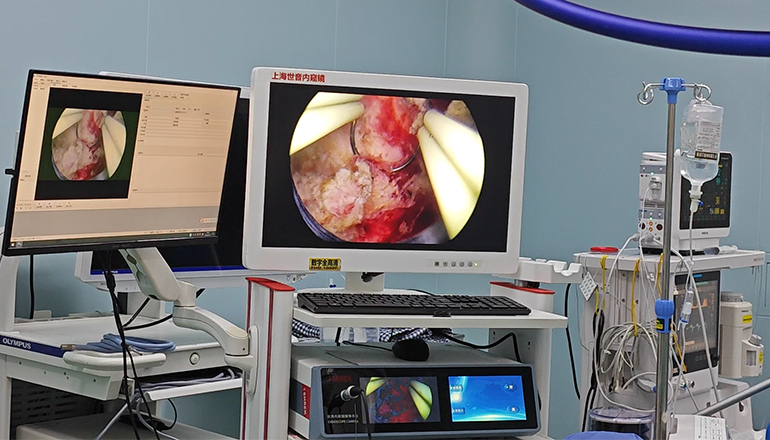- Shanghai, China
- [email protected]
- +86-21-58189111
Hysteroscopy surgery is a minimally invasive surgical technique used to diagnose and treat various conditions affecting the uterus. It offers several advantages over traditional open surgery, including:
Minimal Scarring: Hysteroscopy is a minimally invasive procedure that requires only a small incision in the cervix. As a result, the amount of scarring is minimal compared to traditional open surgery. This is especially beneficial for women who are concerned about the aesthetic appearance of their bodies.
Quick Recovery Time: Hysteroscopy surgery typically requires less recovery time than traditional open surgery. Patients can usually return to their normal activities within a few days, whereas open surgery may require several weeks of recovery time.
Reduced Pain: Hysteroscopy surgery is associated with less pain than traditional open surgery. This is because the procedure requires a smaller incision and less tissue damage, resulting in less discomfort for the patient.
Fewer Complications: Because hysteroscopy surgery is a minimally invasive procedure, it is associated with fewer complications than traditional open surgery. This includes a lower risk of infection, bleeding, and other surgical complications.

High Success Rate: Hysteroscopy surgery is a highly successful procedure for diagnosing and treating uterine abnormalities. The success rate for hysteroscopy surgery is very high, with most patients experiencing significant improvement in their symptoms following the procedure.
Diagnostic Accuracy: Hysteroscopy surgery allows for a detailed examination of the uterine cavity, which can help diagnose a variety of conditions affecting the uterus. This includes identifying the presence of uterine fibroids, polyps, or other abnormalities that may be causing abnormal uterine bleeding, pelvic pain, or infertility.
Therapeutic Benefits: Hysteroscopy surgery can also be used to treat uterine abnormalities. This includes removing uterine fibroids or polyps or correcting structural abnormalities that may be causing infertility. The use of hysteroscopy surgery for therapeutic purposes can improve fertility and reduce the risk of complications associated with more invasive procedures.
Hysteroscopy surgery is a minimally invasive surgical technique that offers several advantages over traditional open surgery. It is associated with less scarring, reduced pain, fewer complications, and a quicker recovery time. Hysteroscopy surgery is highly accurate for diagnosing uterine abnormalities and has a high success rate for treating these conditions.
These advantages make hysteroscopy surgery a popular choice for women who need a diagnostic or therapeutic procedure for uterine abnormalities. It is especially useful for women who are concerned about the potential risks and complications associated with more invasive surgical procedures.
Furthermore, hysteroscopy surgery can be performed on an outpatient basis, which means that patients can return home on the same day as the procedure. This can help reduce the overall cost of the procedure and minimize the time away from work or other obligations.
Overall, hysteroscopy surgery is a safe and effective option for women with uterine abnormalities. It offers several advantages over traditional open surgery, including less scarring, reduced pain, fewer complications, and a quicker recovery time. If you are experiencing symptoms such as abnormal uterine bleeding, pelvic pain, or infertility, you should talk to your doctor to see if hysteroscopy surgery is right for you.
Leave a Comments